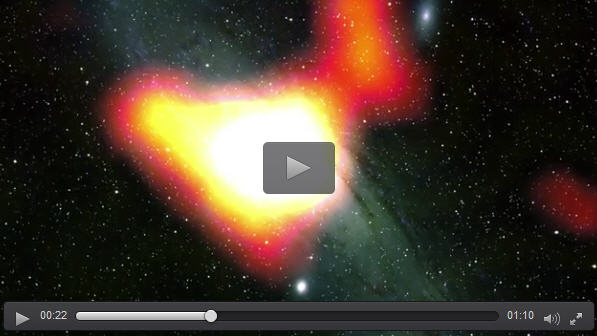NASA's fermi finds possible dark matter ties in andromeda galaxy

NASA's Fermi telescope has detected a gamma-ray excess at the center of the Andromeda galaxy that's similar to a signature Fermi previously detected at the center of our own Milky Way. Watch to learn more. Credit: NASA's Goddard Space Flight Center/Scott Wiessinger, producer
Gamma rays are the highest-energy form of light, produced by the universe's most energetic phenomena.
They're common in galaxies like the Milky Way because cosmic rays, particles moving near the speed of light, produce gamma rays when they interact with interstellar gas clouds and starlight.
Surprisingly, the latest Fermi data shows the gamma rays in Andromeda — also known as M31 — are confined to the galaxy's center instead of spread throughout.
To explain this unusual distribution, scientists are proposing that the emission may come from several undetermined sources.
One of them could be dark matter, an unknown substance that makes up most of the universe.
Media Contact
All latest news from the category: Physics and Astronomy
This area deals with the fundamental laws and building blocks of nature and how they interact, the properties and the behavior of matter, and research into space and time and their structures.
innovations-report provides in-depth reports and articles on subjects such as astrophysics, laser technologies, nuclear, quantum, particle and solid-state physics, nanotechnologies, planetary research and findings (Mars, Venus) and developments related to the Hubble Telescope.
Newest articles

“Nanostitches” enable lighter and tougher composite materials
In research that may lead to next-generation airplanes and spacecraft, MIT engineers used carbon nanotubes to prevent cracking in multilayered composites. To save on fuel and reduce aircraft emissions, engineers…

Trash to treasure
Researchers turn metal waste into catalyst for hydrogen. Scientists have found a way to transform metal waste into a highly efficient catalyst to make hydrogen from water, a discovery that…

Real-time detection of infectious disease viruses
… by searching for molecular fingerprinting. A research team consisting of Professor Kyoung-Duck Park and Taeyoung Moon and Huitae Joo, PhD candidates, from the Department of Physics at Pohang University…





















